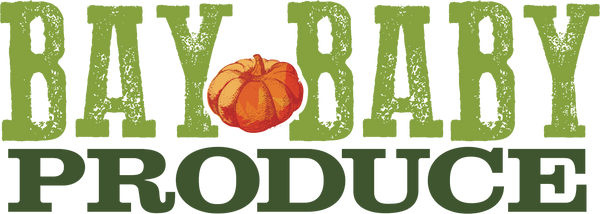July Hobby Garden Checklist: Cultivate!
The enthusiasm for our vegetable gardens and flowers usually peaks in early spring as we prepare and plant them. However, it tends to wane once the plants are in the ground and we witness their initial blooms. It's during this active expansion of our gardens that a surge of excitement and adrenaline kicks in.
Nonetheless, it's crucial to understand that the key aspect of gardening lies in nurturing and sustaining the plants after they are established in the ground. What many people may not realize is that each plant has distinct requirements for optimal growth, including factors such as sunlight (both duration and intensity), watering (the appropriate amount and frequency), and harvesting (knowing when and how much to harvest).
The variables is what makes each year different from the last, and makes growing your own food and flowers a challenge!
Consider each of these factors below in the months of July- you may not be planting, but you should be in your garden, noticing all the little details that will have an impact on your harvest:
-
Fertilization: Fertilizers are applied to the soil or plants to provide essential nutrients for healthy plant growth. This may involve the use of organic matter, compost, manure, or synthetic fertilizers.
-
Irrigation: Providing adequate water to the crops is crucial for their growth and development. Depending on the availability of water and the specific crop's water requirements, farmers may employ various irrigation methods like sprinkler systems, drip irrigation, or flood irrigation.
-
Weed Control: Weeds compete with crops for nutrients, water, and sunlight. Farmers employ various methods to control weeds, including manual weeding, hoeing, mulching, or using herbicides selectively.
-
Pest and Disease Management: Farmers monitor their crops for pests, diseases, and other harmful organisms that can damage or reduce yields. Integrated Pest Management (IPM) techniques are commonly used, which may involve biological control, cultural practices, use of pesticides (if necessary), or crop rotation.
-
Crop Maintenance: This includes activities like pruning, thinning, staking, or trellising plants, depending on the crop's needs. It also involves monitoring for nutrient deficiencies, adjusting fertilization as needed, and managing plant growth.
Of course, once your crops reach maturity, you will harvest! Each garden is unique and different. You will need to change the frequency of certain tasks based on where you live, and what good Ol' Mother Nature is up to! Below we have put together a list for Cultivation Practices for the Month of July, and how to handle the heat!
Lettuce:
- Shade Protection: Provide shade or use shade cloth to protect lettuce from intense heat to prevent bolting (premature flowering).
- Watering: Ensure consistent soil moisture by watering lettuce regularly, especially during dry periods.
- Succession Planting: Sow lettuce seeds every few weeks for a continuous harvest.
- Harvesting: Harvest outer leaves of lettuce plants as needed, allowing the inner leaves to continue growing.
Tomatoes:
- Pruning: Continue pruning tomato plants by removing suckers to focus energy on fruit production.
- Watering: Water tomato plants deeply, aiming to keep the soil evenly moist but not waterlogged.
- Mulching: Apply mulch around tomato plants to conserve moisture and suppress weed growth.
- Disease Prevention: Monitor for common tomato diseases like blight or wilt, and take preventive measures such as applying fungicides if necessary.
- Harvesting: Harvest tomatoes when they are fully ripe and have developed their characteristic color.
Peppers:
- Watering: Provide peppers with consistent moisture by deep watering when the soil surface begins to dry out.
- Fertilization: Apply a balanced fertilizer to provide essential nutrients for pepper plants.
- Support: Stake or cage pepper plants to provide support as they grow and produce heavy fruit.
- Pest Control: Monitor for pests such as aphids or pepper weevils and take appropriate measures like using organic insecticides or employing beneficial insects for control.
- Harvesting: Harvest peppers when they have reached their desired size and color.
Onions:
- Watering: Water onion plants deeply to keep the soil consistently moist, especially during bulb formation.
- Weed Control: Keep the onion beds free from weeds to minimize competition for nutrients and water.
- Fertilization: Apply a balanced fertilizer or side dress with compost to provide adequate nutrients.
- Harvesting: Harvest onions when the tops begin to turn yellow and fall over. Allow the bulbs to dry in a well-ventilated area before storing.
Carrots:
- Thinning: Thin carrot seedlings to provide adequate spacing, typically 2-3 inches apart.
- Watering: Water carrot plants evenly to prevent irregular root growth and promote sweetness.
- Weed Control: Regularly remove weeds around carrot plants to prevent competition.
- Harvesting: Harvest carrots when they reach the desired size, typically 60-80 days after sowing, by gently loosening the soil and pulling them out.
Pumpkins: OUR SPECIALTY:)
- Pollination: Assist in pollination by hand-pollinating pumpkin flowers using a small brush or transferring pollen between male and female flowers.
- Watering: Provide pumpkins with regular deep watering, especially during dry spells, to ensure healthy fruit development.
- Pest Control: Monitor for pests such as squash bugs or vine borers and use appropriate organic insecticides or physical barriers.
- Vine Management: Train pumpkin vines to grow in the desired direction or use supports to prevent sprawling and improve airflow.

Remember, these are general cultivation practices, and specific techniques may vary depending on your location, climate, and specific growing conditions. It's always beneficial to adapt practices to your local conditions and consult local gardening resources or experts for region-specific guidance, but we hope this list can give you an idea of topics to explore!
Keep cool in the summer months, and be sure to nurture your garden!

